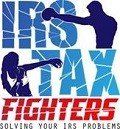Knowing the total amount of your debt will be an important step in the process and will help in deciding your best relief option.
2. Examine Your Financial Situation
To even qualify for tax relief, you are required to demonstrate that you’re having financial difficulties. You will need to look at your current finances - income, expenses, and current assets.
Many people find themselves struggling to make ends meet, so if you can not cover both your living expenses and tax debt, you may be eligible for relief.
Work on gathering important documents like pay stubs, bank statements, and bills to clearly show your financial situation, especially if you are struggling.
3. Ensure Your Tax Filings Are Up-to-Date
Most tax relief options require that you have filed all your past and current tax returns, which means you need to be current with all your tax filings.
If you’ve missed any returns, get them filed as soon as possible, and make sure you’re keeping up with any new tax bills to avoid making your situation worse.
4. Explain Your Reason for Penalties
If you’re seeking penalty relief, you need to explain why you didn’t pay your taxes on time.
Some common valid reasons might include illness, natural disasters, or other significant hard times that you can prove. Have all of your evidence ready along with detailed explanations for your specific situation. It may help to strengthen your case.
5. Review Your Tax History
Your history with the IRS can influence your eligibility for tax relief. If you’ve had ongoing issues or shown deliberate avoidance, it might affect your options.
A tax relief professional like the ones at IRS Tax Fighters will help review your history and determine how it impacts your chances of qualifying for relief.
6. Understand Different Relief Options
As mentioned earlier, when faced with a large amount of tax debt, there are various relief options potentially available, each with specific rules:
● Payment Plans: These are ideal if you can’t pay everything at once but can manage monthly payments.
● Offers in Compromise: This option is better if you can’t pay what you owe and face severe financial hardship.
● Penalty Relief: Available if you have a reasonable cause for not paying on time.
Understanding these options and their rules may help you choose the right path for your situation.
Determining if you qualify for tax relief can be a complicated process, but with the right information and support, you can navigate this process more easily and find the help you need.
If you’re feeling overwhelmed by the options available to you or are facing financial difficulties, don’t hesitate to reach out for assistance.
The team at IRS Tax Fighters is here to help you understand your options and find the best solution for your needs.
Contact us today
to get started.


